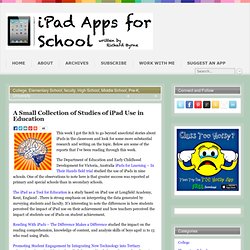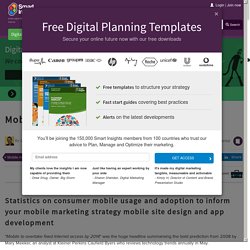

Edutopia. Ten is now the average age when children receive their first cell phones, and those phones quickly find their way into classrooms. While cell phones have extraordinary potential for leveraging learning, they can quickly become a hindrance in the classroom, diverting attention away from learning. Ipad-quick-reference-2. New iPad Schools in Holland Hope to Revolutionize Education. Think different.

It was more than an advertising slogan. It was a manifesto, and with it, former Apple CEO Steve Jobs upended the computer industry, the music industry and the world of mobile phones. The digital visionary's next plan was to bring radical change to schools and textbook publishers, but he died of cancer before he could do it. Some of the ideas that may have occurred to Jobs are now on display in the Netherlands. Eleven "Steve Jobs schools" will open in August, with Amsterdam among the cities that will be hosting such a facility. There will be no blackboards, chalk or classrooms, homeroom teachers, formal classes, lesson plans, seating charts, pens, teachers teaching from the front of the room, schedules, parent-teacher meetings, grades, recess bells, fixed school days and school vacations.
A Small Collection of Studies of iPad Use in Education. This week I got the itch to go beyond anecdotal stories about iPads in the classroom and look for some more substantial research and writing on the topic.

Below are some of the reports that I’ve been reading through this week. The Department of Education and Early Childhood Development for Victoria, Australia iPads for Learning – In Their Hands field trial studied the use of iPads in nine schools. One of the observations to note here is that greater success was reported at primary and special schools than in secondary schools. The iPad as a Tool for Education is a study based on iPad use at Longfield Academy, Kent, England . There is strong emphasis on interpreting the data generated by surveying students and faculty. iPadagogy. Mobile marketing statistics 2013.
"Mobile to overtake fixed Internet access by 2014" was the huge headline summarising the bold prediction from 2008 by Mary Meeker, an analyst at Kleiner Perkins Caufield Byers who reviews technology trends annually in May.

The mobile statistics that the team at Smart Insights curate in the regular updates to this article are grouped under these headings for key questions marketers need to answer about mobile to help them compete: Q1. Time spent using mobile mediaQ2. Percentage of consumers using mobile devicesQ3. How many website visits are on mobile vs desktop devices? The United States and United Kingdom are the main countries covered for which there are many reports. Well, we're now past the mobile Tipping Point shown in the chart below as this 2017 mobile usage report from comScore shows, based on percent of mobile minutes spent online. So it's no longer a case of asking whether mobile marketing important, we know it is! Download our Free Digital Strategy Guide. Q1. Q2. Q3. iPads in schools! They just play games! 20th Century pedagogy + iPads = Gaming So, you’re in your classroom and annoyed that the kids are playing games on the iPads.

You have devised a strategy and at random intervals, you ask them to double-click the ‘Home’ button to see the last apps used. Great! Well done on controlling the situation so they can get on with: writing their notes;Reading their e-textbook;completing their essay or‘Researching’ on the Internet. The only step forward you’ve really seen is the ability to use that Shakespeare app or Dissecting Frog app. The parents too, have complained that all they seem to see is game playing and maybe your school is considering limiting the apps allowed on the devices. Well done on introducing iPads. Now you have introduced a radically new and powerful learning device, you need to update your pedagogy to match it. The iPad – What it should and shouldn’t be for Education. This blog originally started as a reflection journal as I begun a pilot program for using iPads at my school.

My early posts ( check January and February posts ) were discussions of the pros and cons of iPads. As the year has gone by and I have more time to research, read other iPad articles and experiment more with apps and with the students using them more frequently, I’ve had time to reflect on what iPads are offering schools. I’m not going to debate what model of iPad program to commit to – 1:1 or shared.
5 Critical Mistakes Schools Make With iPads (And How To Correct Them) 5 Reasons The iPad Will Stay The King of the Classroom. The following piece is by the amazingly talented Adam Webster, Assistant Director of Learning and Teaching at a secondary school in Surrey, England. He writes for both the Edudemic Magazine and his blog ‘ Cageless Thinking ‘ (worth bookmarking). This article originally appeared on Cageless Thinking and was cross-posted with Adam’s permission. 1.
It’s not a laptop The biggest and most oft-heard criticism of the iPad usually revolves around it not behaving like a desktop PC or laptop. The fact that it isn’t a laptop, to me, is its greatest attribute: The SAMR model suggests that there are 4 degrees of sophistication for using technology in education: As you can see from the diagram (created using Paper by Fifty Three) the most sophisticated levels involve ‘Transformation’. I believe that the iPad makes transformation far more possible, indeed likely, than a laptop. 2. 3. Yes, Apple devices are more expensive than most other devices. 4. 5. The Tablet Takeover. SchoolInfoApp ©2013.